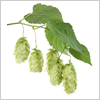
 USA, WA: 47 Hops of Yakima bankruptcy may signal industry turbulence
USA, WA: 47 Hops of Yakima bankruptcy may signal industry turbulence
The bankruptcy of a Washington hop merchant may signal renewed turbulence in the hops market, with lower-than-expected demand for the crop raising oversupply concerns, Capital Press reported on August 30.
47 Hops of Yakima, Wash., has filed for Chapter 11 bankruptcy protection, which shields the company from creditors while it develops a restructuring plan to repay debts and remain operational.
The hop broker has more than $7.4 million in debt and $4.3 million in assets, according to the filing. In 2016, the company earned $10.6 million in revenues, up from $7.1 million the previous year.
Douglas MacKinnon, the company’s president, did not respond to a request for comment, but on 47 Hops’ website he blames the bankruptcy on slowed growth in the craft beer market.
“Unfortunately, during the past several years, brewers fueled by optimism contracted for more hops than they now need,” he wrote.
Some brewers have delayed paying for hops and taking delivery of the crop, saddling 47 Hops with a higher inventory and debt burden, according to MacKinnon.
Judging from USDA statistics, 47 Hops is not alone in this predicament.
Earlier this year, growers and dealers held hops stocks of 105 million pounds, three times the amount held by brewers, according to the agency.
To compare, growers and dealers held hop stocks of 64 million pounds five years earlier, while brewers held 53 million pounds of the crop.
The growing inventories reflect excessive enthusiasm among brewers and farmers, who both overestimated demand for “aroma” hops used in craft beers, said John Annen, a hop grower near Mt. Angel, Ore., who supplies 47 Hops.
“There are too many aroma hops around. Too many in the ground, too many in the warehouse,” Annen said.
Craft brewers expected the steep upward trajectory of their beer sales to remain constant, spurring farmers to plant more hops, he said. “One thing builds on another.”
When sales weren’t as robust as projected, brewers pushed back deliveries of hops, Annen said. “It just starts backing up.”
In 2014, sales of craft beer grew 22 percent by value and 18 percent by volume, but last year, sales increased 10 percent by value and 6 percent by volume, according to the Brewers Association.
“We have seen a deceleration,” said Bart Watson, the group’s chief economist.
Craft beers typically require three to four times more hops per barrel than conventional domestic beer, so the upswing in craft beer production had an outsized impact on hop demand, he said.
Many of the new breweries are small and lack storage space, though, which partly helps explain the rising hop stocks among dealers and growers, Watson said.
However, in some areas, the craft beer market has grown increasingly competitive but retailers have been slower to add shelf space and tap handles to accommodate new brands, he said.
“It’s crowded out there,” Watson said.
The hop industry is no stranger to turmoil.
In 2007, a shortage of hops caused brewers to start “panic buying,” but strong production soon reversed that trend, leading to an oversupply in 2009, said Ann George, executive director of the Hop Growers of America.
The situation has grown more complicated as farmers now produce numerous hop cultivars to meet brewers’ needs, so there can be surpluses of some varieties and shortages of others, she said.
“It’s virtually impossible to have everything in perfect balance,” George said.
Despite the inventory surge, average prices for hops have remained healthy, according to USDA statistics. The average price per pound rose to $5.72 in 2016, up more than 30 percent from the year before.
The price increase is probably due to brewers compensating farmers for the lower yields associated with aroma hops, which are now more commonly grown than bitterness-imparting alpha hops, George said.
“We’ve changed our variety mix,” she said.
Regresar
E-malt.com, la fuente de información global para los profesionales de la industria cervecera y de malteado. Los boletines quincenales de E-malt.com incluyen las últimas noticias de la industria, estadísticas en gráficos y tablas, precios mundiales de cebada y malta, y otra información relevante. Haga clic aquí para obtener acceso completo a E-malt.com. Si usted es un cliente de Castle Malting, puede obtener acceso gratuito al sitio web y publicaciones de E-malt.com. Contáctenos para obtener más información en marketing@castlemalting.com.





